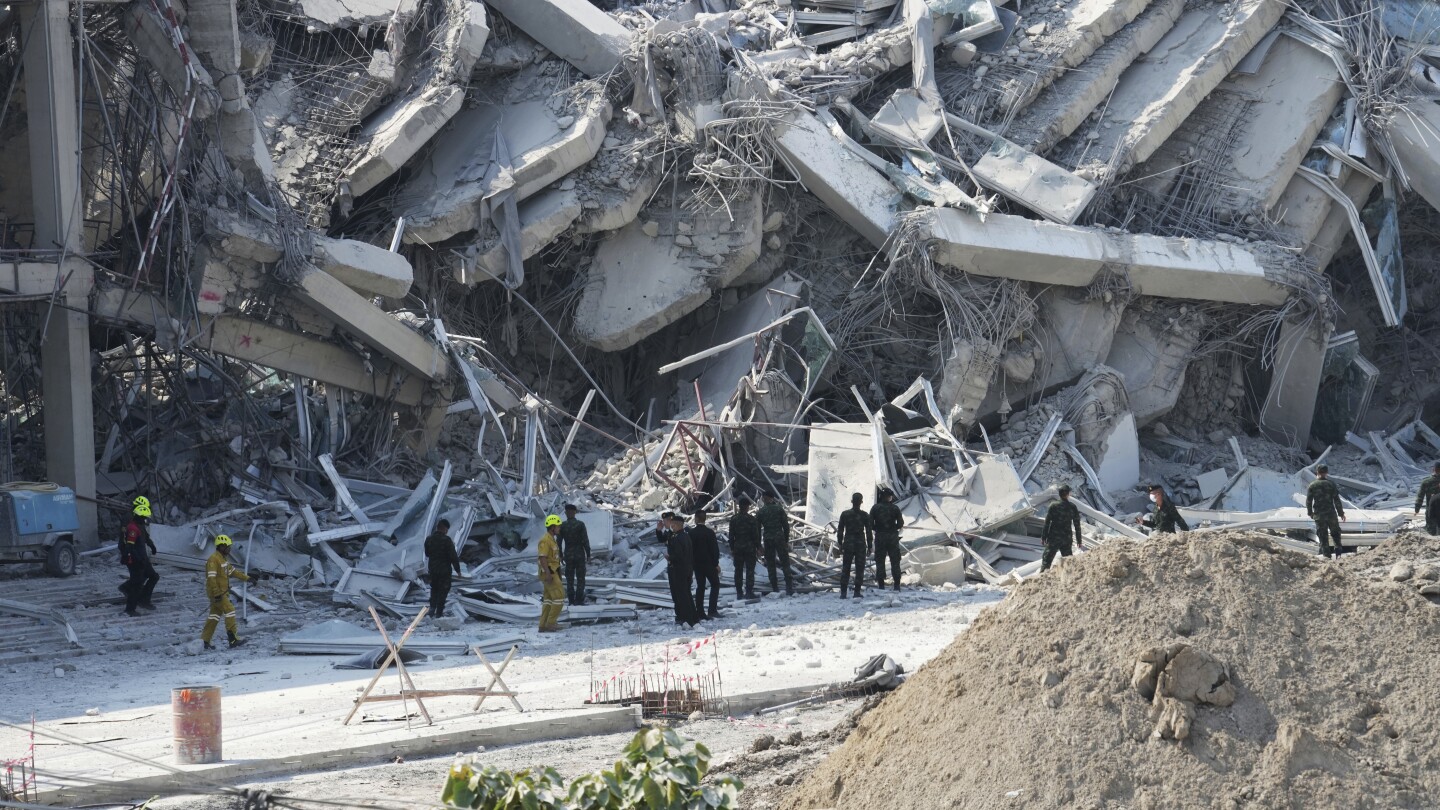Tremors of Change: Understanding Recent Earthquakes in Thailand and Myanmar
Recent powerful earthquakes have not only rattled the foundations of buildings but also the lives of many in Thailand and Myanmar. The collapse of a high-rise in Bangkok highlights the urgent need for improved infrastructure and disaster preparedness in the region. As seismic activity increases, it’s essential to examine the implications of these natural disasters and the responses they evoke in affected communities.
The Seismic Landscape of Southeast Asia
The region encompassing Thailand and Myanmar sits along the volatile borders of tectonic plates, making it particularly susceptible to earthquakes. The Indo-Australian Plate and the Eurasian Plate converge, creating a complex geological environment. Recent seismic events in this area serve as a stark reminder of the power of nature and the necessity for robust disaster preparedness strategies.
In the past few months, a series of earthquakes have struck both nations, with magnitudes reaching levels that prompted widespread alarm. Residents reported intense shaking that lasted several seconds, leaving many in a state of panic and confusion.
The Impact of Recent Earthquakes
One of the most significant incidents was the earthquake that hit near the Thai-Myanmar border. This seismic event registered a magnitude of 6.2 and was felt across various regions, including the bustling city of Bangkok. In a matter of moments, lives were turned upside down. Buildings swayed, and thousands rushed to the streets in fear.
- Infrastructure Damage: The most immediate concern following such quakes is the structural integrity of buildings. In Bangkok, a high-rise collapsed, raising questions about the safety standards of construction in the area.
- Casualties: Tragically, several lives were lost, and many others were injured, underscoring the human cost of these natural disasters.
- Economic Disruption: The aftermath of an earthquake can stall economic activities, particularly in regions heavily reliant on tourism and trade.
Lessons from the Ground: Personal Accounts
To fully understand the tremors of change, we must listen to the voices of those affected. Local residents have shared harrowing tales of their experiences during the quakes. “I thought it was the end,” said a Bangkok shop owner whose store was severely damaged. “We have never felt anything like this before.”
Another resident from northern Thailand recounted how families were forced to evacuate their homes in the middle of the night, clutching whatever they could carry while scrambling to safety. These stories illustrate the psychological toll such events take, often leaving lasting scars on communities.
The Urgent Need for Improved Infrastructure
The collapse of buildings during these earthquakes has raised alarms regarding infrastructure safety. Experts have long warned that many structures in Thailand and Myanmar are not built to withstand significant seismic activity. The recent disasters have highlighted the immediate need for:
- Stricter Building Codes: Governments must enforce updated building codes that account for seismic risks.
- Retrofitting Older Buildings: Many older structures need retrofitting to enhance their ability to withstand earthquakes.
- Emergency Response Training: First responders and community members should receive training on how to react during seismic events.
Disaster Preparedness: A Way Forward
In the wake of recent earthquakes, both Thailand and Myanmar must prioritize disaster preparedness. This involves not just improving infrastructure but also fostering a culture of readiness among citizens. Here are some strategies that could make a significant difference:
- Public Awareness Campaigns: Educating the population about earthquake preparedness can save lives. Simple actions, such as knowing where to take cover and having an emergency kit, can make a significant difference.
- Community Drills: Regular earthquake drills can help residents understand what to do during an actual event, reducing panic and confusion.
- Investment in Research: Understanding local seismic patterns through research can help in predicting future earthquakes and assessing risks more accurately.
International Collaboration and Support
Given the global nature of natural disasters, international collaboration is essential. Countries across the region can learn from one another’s experiences and strategies. Organizations such as the United Nations and various NGOs often provide resources and expertise to aid in disaster preparedness and recovery.
Moreover, neighboring countries can assist by sharing technology, funding, and training programs that enhance local capacities to deal with earthquakes. Collaborative efforts can significantly bolster infrastructure resilience and community preparedness.
Conclusion: Embracing Change Amidst Challenges
The recent earthquakes that shook Thailand and Myanmar serve as a reminder of the unpredictable forces of nature. While the immediate aftermath is fraught with challenges, it also presents an opportunity for growth and improvement. By addressing infrastructure weaknesses, fostering disaster preparedness, and embracing international cooperation, both nations can emerge stronger and more resilient.
As communities rebuild, they must not only focus on physical structures but also on the emotional and psychological recovery of their residents. The tremors of change can be daunting, but with concerted efforts, Thailand and Myanmar can pave the way towards a safer, more prepared future.
See more ABC News Feed



